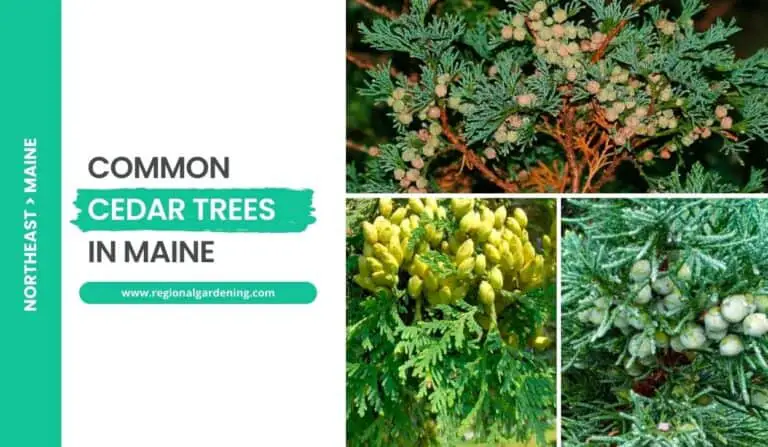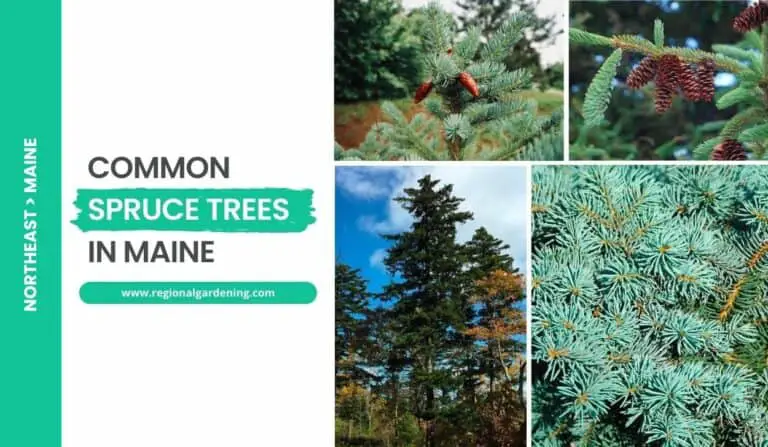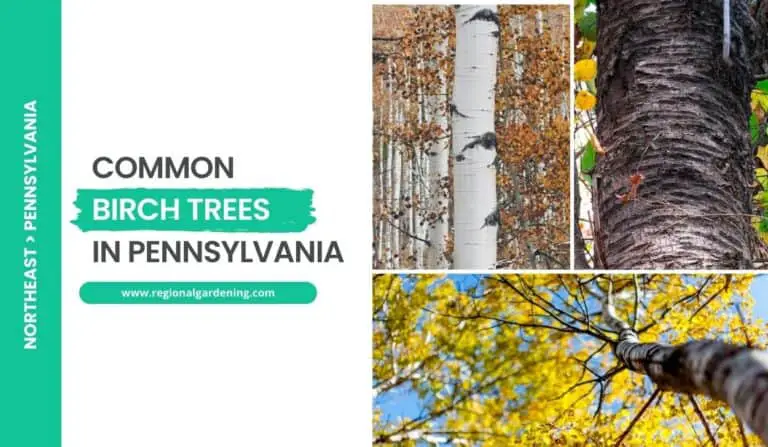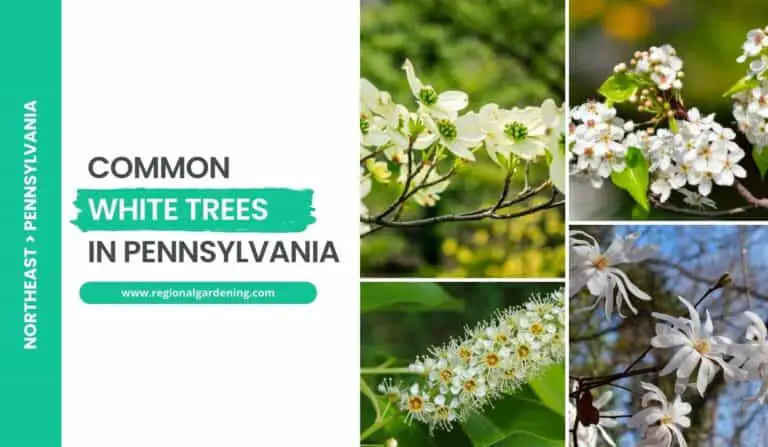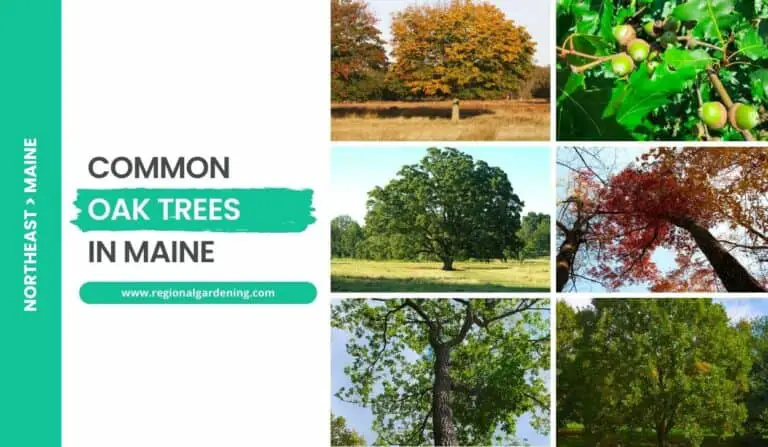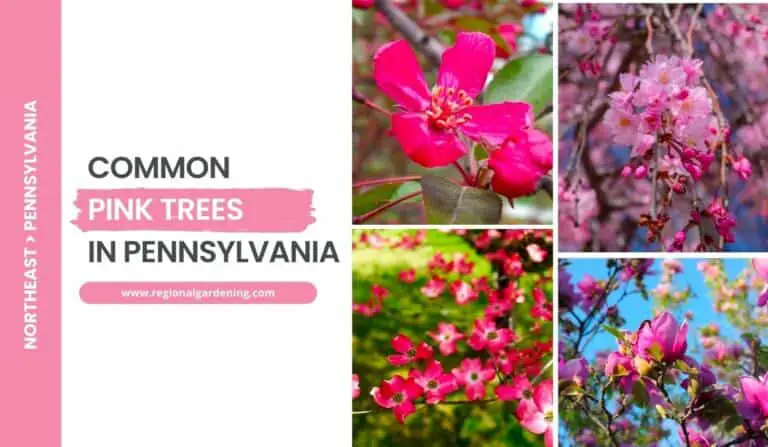2 Native Locust Trees In Pennsylvania (Photos & Identification)
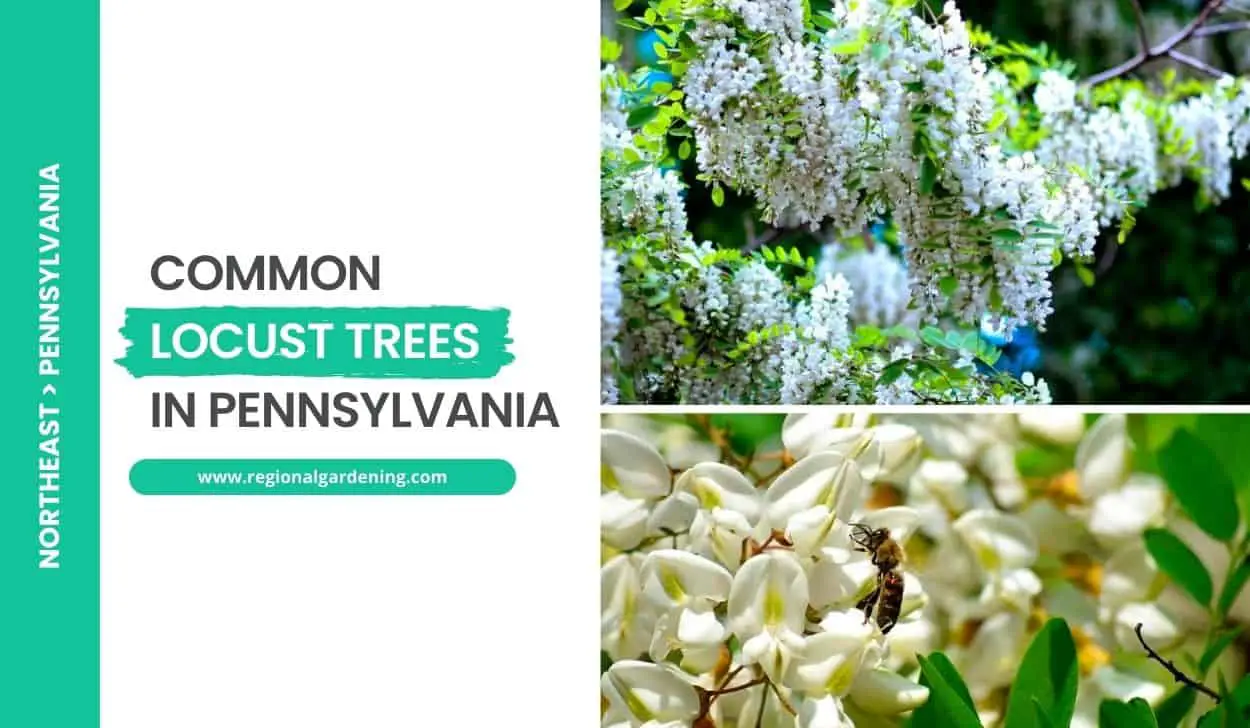
Locust trees in Pennsylvania not only provide shade but also bear breathtakingly beautiful flowers. In this article, we will look at two common types of locust trees found in Pennsylvania’s picturesque landscapes.
The flowers of these trees captivate the eye with their vibrant colors and delicate petals, adding a touch of enchantment to any outdoor setting.
So, let’s enjoy the blooming wonders and explore the charm of locust trees in Pennsylvania.
1. Black Locust
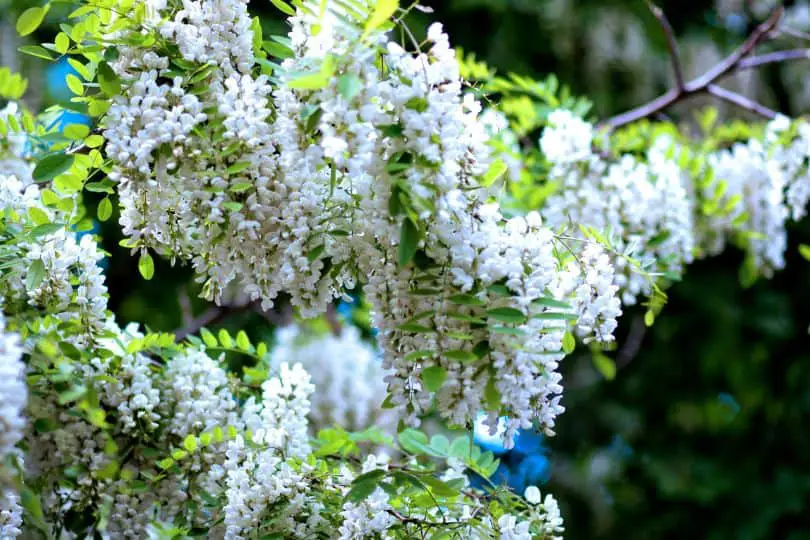
- Scientific Name: Robinia pseudoacacia L.
- Common Name: Black Locust
- Mature Height: Up to 75 feet (23 meters)
- Native Region: North America
- Flowers: White, showy, and very fragrant in drooping clusters
- Fruit: Thin, flat pod, 2-4 inches (5-10 cm) long, usually with 4-8 seeds
- Uses: Durable wood for posts, poles, railroad ties, and mine timbers
The Black Locust, also known as Robinia pseudoacacia L., is a medium-sized tree that can reach heights of 75 feet. Throughout Pennsylvania, it can be found in open woodlands, floodplains, thickets, and fencerows. The tree originated in North America.
The Black Locust has alternating, compound leaves with 7-19 oval leaflets that range in length from 1 to 2 inches. The leaf edges are even. The twigs are zigzag and angled in shape, with short, sharp prickles. The Black Locust, unlike many other trees, does not have an end bud, and its side buds are small and hidden during the winter.
The Black Locust produces gorgeous, showy, white blossoms that are exceedingly fragrant in May and June. The flowers are grouped in drooping clusters, which adds to their visual appeal. The tree also produces thin, flat pods that grow to be 2-4 inches long. When ripe, these pods contain 4-8 seeds and are split on both sides.
The Black Locust’s bark is reddish-brown, rough, and furrowed. In comparison to other tree species, it is relatively thick. Black Locust wood is extremely durable and is often used for posts, poles, railroad ties, and mine timbers. It is a common choice for these applications due to its resistance to decay and endurance in contact with dirt.
While the Black Locust has favorable characteristics, it is susceptible to insect and wood rot damage, particularly in trees growing in poor soils. However, squirrels eat the tree’s seeds, which provide sustenance for them. Furthermore, the Black Locust blossoms provide nectar, which bees use to make honey.
The Black Locust can be a wonderful addition to gardens and landscapes in Pennsylvania. It grows nicely in full sunlight and well-drained soil. It is extremely adaptable to a wide range of soil types, including poor soils. Pruning should be done regularly to keep the tree in good shape and to remove any dead or broken limbs.
2. Honey Locust
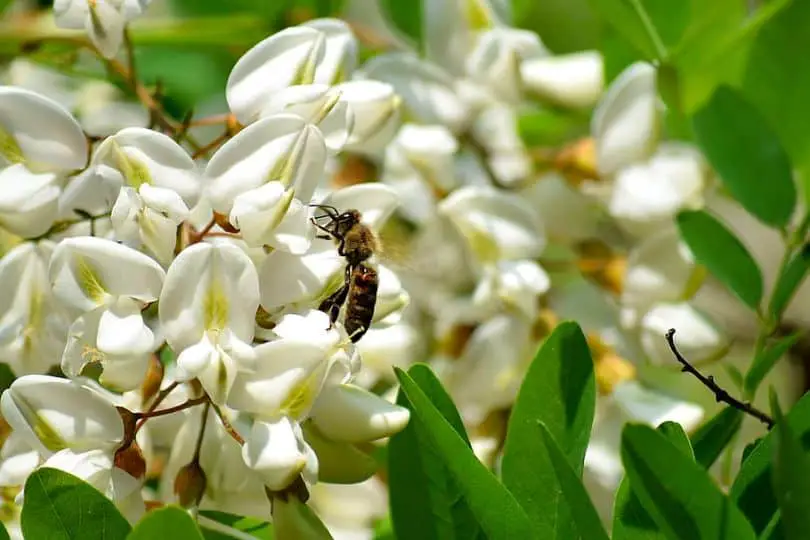
- Scientific Name: Gleditsia triacanthos L.
- Common Name(s): Honey-locust
- Mature Height: 40-50 feet (12-15 meters)
- Native Region: North America
- Flowers: Yellowish green
- Fruit: Leathery pod, 10-18 inches long, containing numerous hard, dark brown, oval seeds with a sweetish, gummy pulp.
- Uses: The strong and hardwood of the honey-locust is used for fence posts and general construction. Many animals, including cattle, consume the pods and seedlings.
The honey-locust, scientifically known as Gleditsia triacanthos L., is a medium-sized tree that can grow up to 100 feet tall but is most often found at 40-50 feet. It is native to North America and can be found in southwestern Pennsylvania’s rich, damp bottomlands. It is, nonetheless, commonly planted as an attractive tree in gardens across the state.
The honey-locust has compound, once or twice complex, alternating leaves that are about 7-8 inches long. The leaves are made up of an even number of 1-inch leaflets with fine-toothed edges. The petiole, or leaf stem, is grooved and hairy above.
The honey-locust twigs are somewhat robust, lustrous, and smooth, and range in color from reddish to greenish brown. They are typically ornamented with long, branching, sharp thorns and have mottled or streaked patterns. The twig has no terminal buds and only a few tiny side buds.
The honey-locust fruit is a leathery pod that grows to be 10-18 inches long. The flat, twisted pods hold several firm, dark brown, round seeds. There is a sweet, sticky pulp within the pod.
On younger trees, the honey-locust bark is greenish brown with elevated, horizontal lenticels. The bark of the tree develops from brown to practically black as it matures, with long, narrow, scaly ridges divided by deep crevices. On the bark, it is not uncommon to see clusters of huge, branching thorns.
The honey-locust is predominantly grown in Pennsylvania landscaping for its decorative qualities. It is prized for its beautiful foliage, which turns a bright yellow in the fall. For those who desire a tree without thorns, a thornless variant is available.
The honey locust has a deep root system, which makes it drought-tolerant once established. It prefers full light but will tolerate moderate shade. Young trees should be watered regularly until they are well-established.
The honey locust has various practical uses in addition to its decorative significance. Although it is not commonly available, the tree’s robust wood is utilized for fence posts and basic construction. Many animals, including cattle, eat on honey-locust pods and seedlings. This makes it a vital tree for wildlife habitat and food.
Native Locust Trees In Pennsylvania – Frequently Asked Questions (FAQs)
In this section, we’ll talk about some of the most frequently asked questions related to locust trees in Pennsylvania.
Are there locust trees in Pennsylvania?
Yes, there are locust trees in Pennsylvania. The most common variety is the Black locust (Robinia pseudoacacia) which is a deciduous tree that is native to the eastern and central United States, including Pennsylvania.
The fragrant white flowers of locust trees bloom in late spring or early summer. They have compound leaves that are made up of many small leaflets. The locust tree’s wood is extremely durable and has historically been used for fence posts and construction. In Pennsylvania, locust trees can be found in forests, woodlands, and along roadsides.
What are the common uses of locust trees in Pennsylvania?
Pennsylvanians use locust trees for a variety of purposes. Fencing is one of the most notable applications. The wood of locust trees is extremely durable and rot-resistant, making it ideal for building fence posts and rails. Because of its resistance to decay, locust wood is also used in outdoor construction projects such as decking, bridges, and garden furniture.
Furthermore, because of their extensive root systems, locust trees are sometimes planted for erosion control. They also provide shade and can be planted for landscaping purposes or as a windbreak. Finally, honeybees are drawn to the fragrant flowers of locust trees, and the nectar they produce is used to make locust honey.
Similar Articles
- Common Flowering Trees In Pennsylvania
- Common Maple Trees In Pennsylvania
- Common Cherry Trees In Pennsylvania
- Common Pine Trees In Pennsylvania
- Common Nut Trees In Pennsylvania
- Common Cedar Trees In Pennsylvania
- Common Palm Trees In Pennsylvania
- Common Birch Trees In Pennsylvania
- Common Aspen Trees In Pennsylvania
- Common Oak Trees In Pennsylvania
- Common Ash Trees In Pennsylvania
- Common Elm Trees In Pennsylvania
- Common Spruce Trees In Pennsylvania
- Pink Flowering Trees In Pennsylvania
- White Flowering Trees In Pennsylvania
- Purple Flowering Trees In Pennsylvania
Sources
The Regional Gardening team makes sure that the information in our articles is accurate by only using sources that are known to be trustworthy. Some of these sources are peer-reviewed journals from government agencies, well-known universities, and scientific research organizations.
- Native Plant Resources, Pennsylvania Native Plant Society
- Trees & Shrubs Varieties, PennState Extension
- Landscaping With Natives, Pennsylvania Department Of Conservation, & Natural Resources.
- Explore Pennsylvania Forests, Pennsylvania Department Of Conservation, & Natural Resources.


